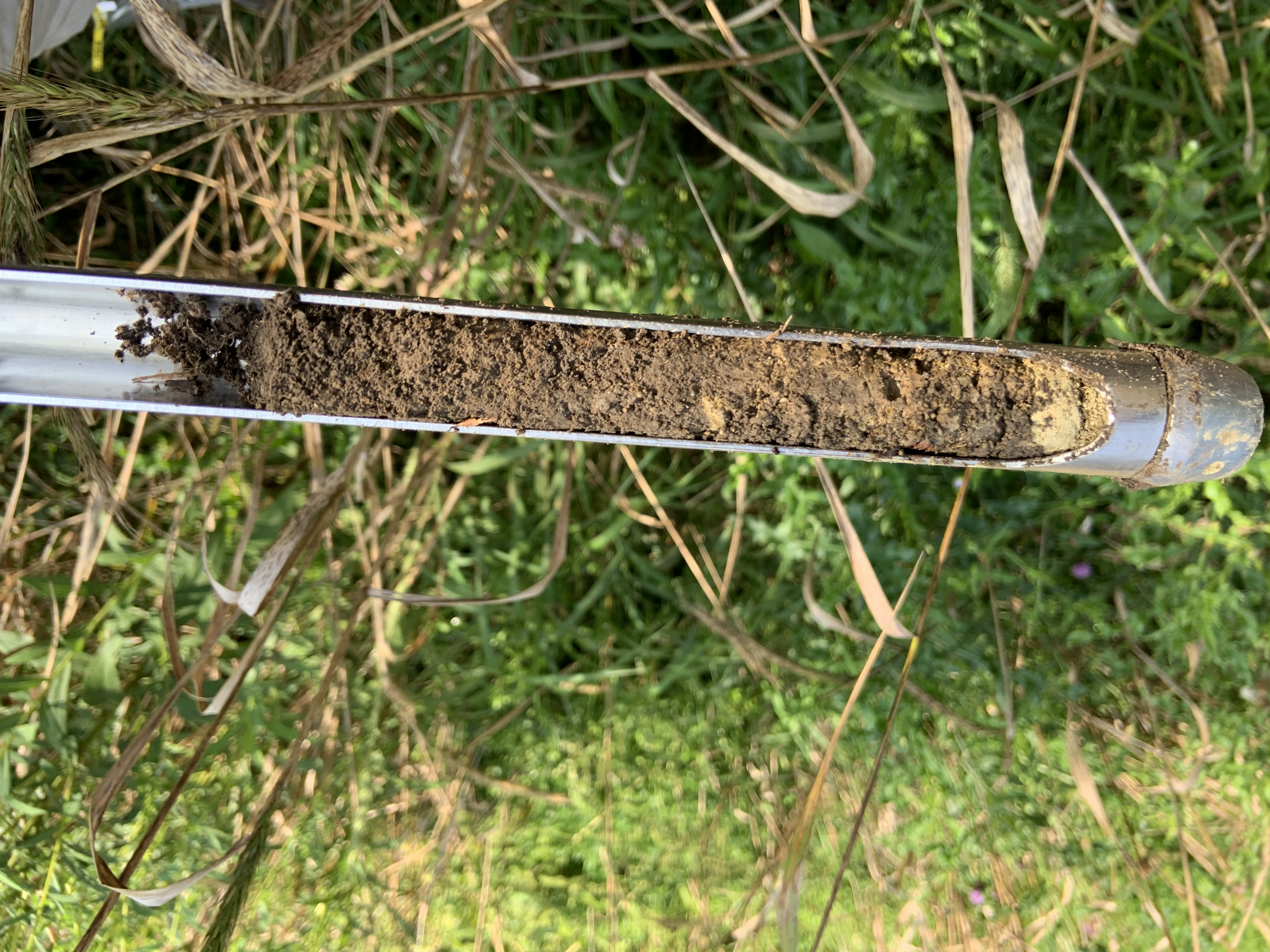Blog

#bioPGH Blog: Meadows and Lawns in the City, Part II
 A resource of Biophilia: Pittsburgh, #bioPGH is a weekly blog and social media series that aims to encourage both children and adults to reconnect with nature and enjoy what each of our distinctive seasons has to offer.
A resource of Biophilia: Pittsburgh, #bioPGH is a weekly blog and social media series that aims to encourage both children and adults to reconnect with nature and enjoy what each of our distinctive seasons has to offer.
Last time on the blog, we introduced one of Phipps’ ongoing plant ecology research projects, a study that asks how do lawns versus meadows compare as green infrastructure in cities? This week, we are going to look a bit closer at the goals of the project, find out how researchers are answering the key questions, and meet Phipps’ plant ecologist who is leading the charge!
As a quick reminder, this project is focused on answering three main questions:
- How does the diversity of plants in a lawn versus a meadow change over time?
- How does the composition of a green space (lawn versus meadow) impact the health of the soil and influence the type of microscopic residents that can be found in the soil.
- How does soil health impact the ability of a green space to remove toxic trace metals from storm water?
To begin answering these questions, Phipps’ Dr. Shishir Paudel, along with other Phipps staff and students from the University of Pittsburgh, focused on four field sites, each with a meadow and a lawn for comparison. At each site, Dr. Paudel began documenting the diversity of plants in the selected meadows and lawns in the study. To ensure an accurate representation of each field site, short of counting every single plant in a field, ecologists established multiple square-meter plots across regularly-spaced intervals to identify and record the plants in each field site.
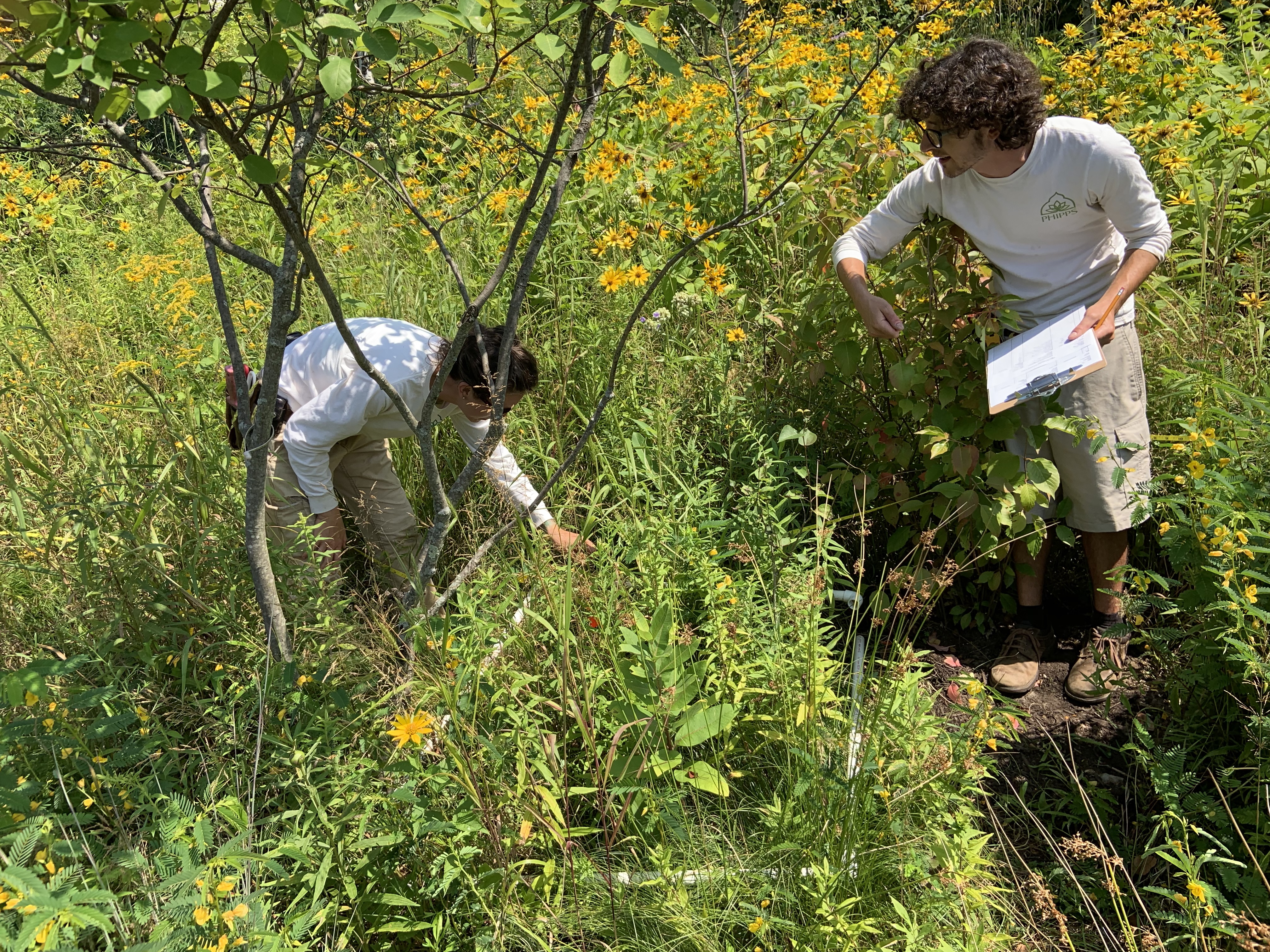
Phipps' staff collecting data.
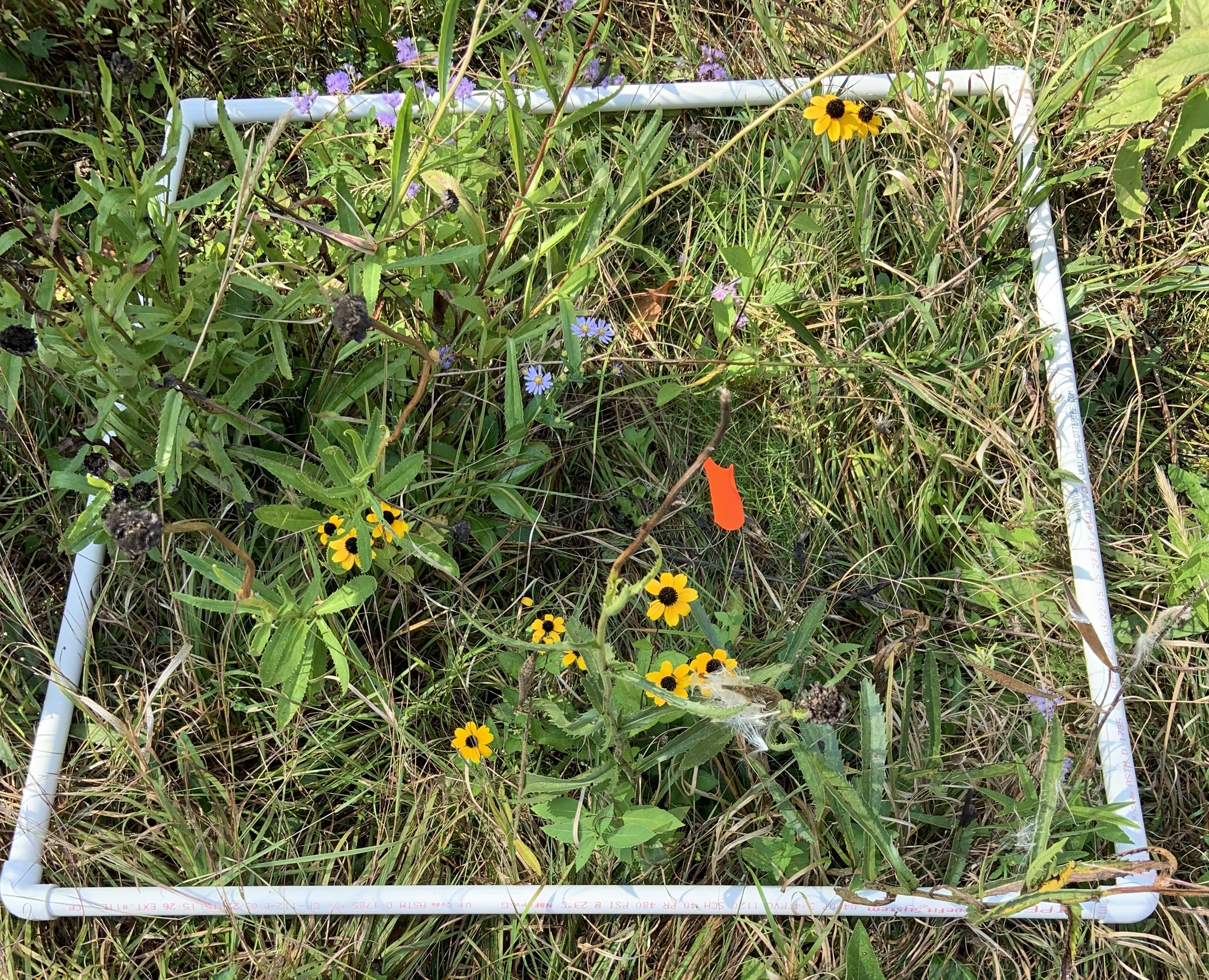
Plants being surveyed.
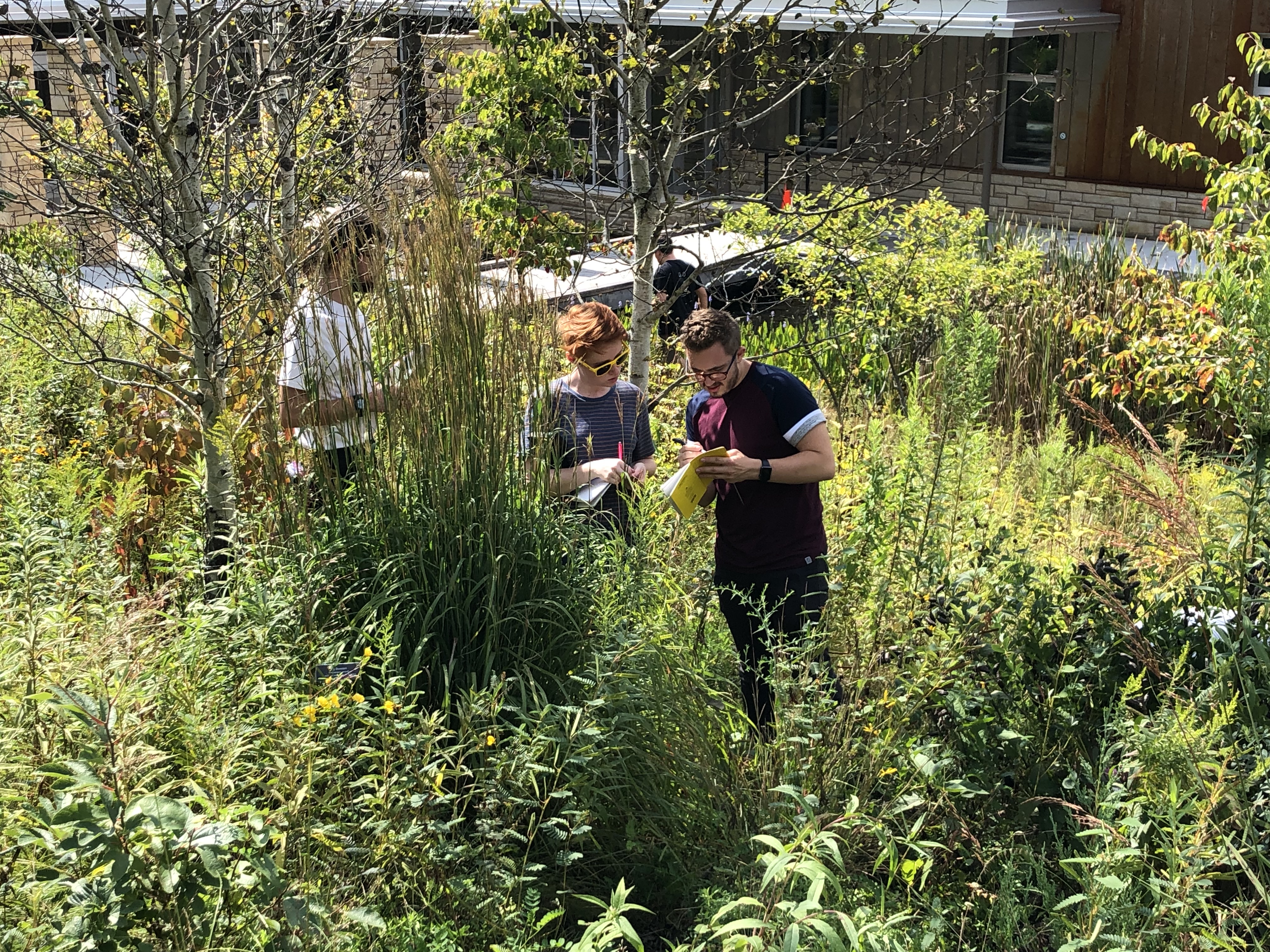
Pitt students collecting data.
To assess the nutrient content, heavy metal content, and the microbial communities of the soil, the team collected soil samples that were sent to different labs for analyses. The microbial communities were identified by looking at specific lipid and fatty acid composition; and the soil components (e.g. nutrient and metals) were measured by a variety of methods that included spectroscopy (a technique that uses light and electromagnetism to look at chemical properties) and combustion (to determine organic versus inorganic content). The nutrient content and microbial communities in the soil will let us know how healthy and vibrant the underground community is, and the metal content would reflect how effective meadow versus lawns are at drawing up soil contaminants. Assessing nutrients, heavy metals, and microbial communities is important to understand the ecological processes and associated benefits, including soil health, erosion control, reduced nutrient leaching, and sociocultural from urban green spaces.
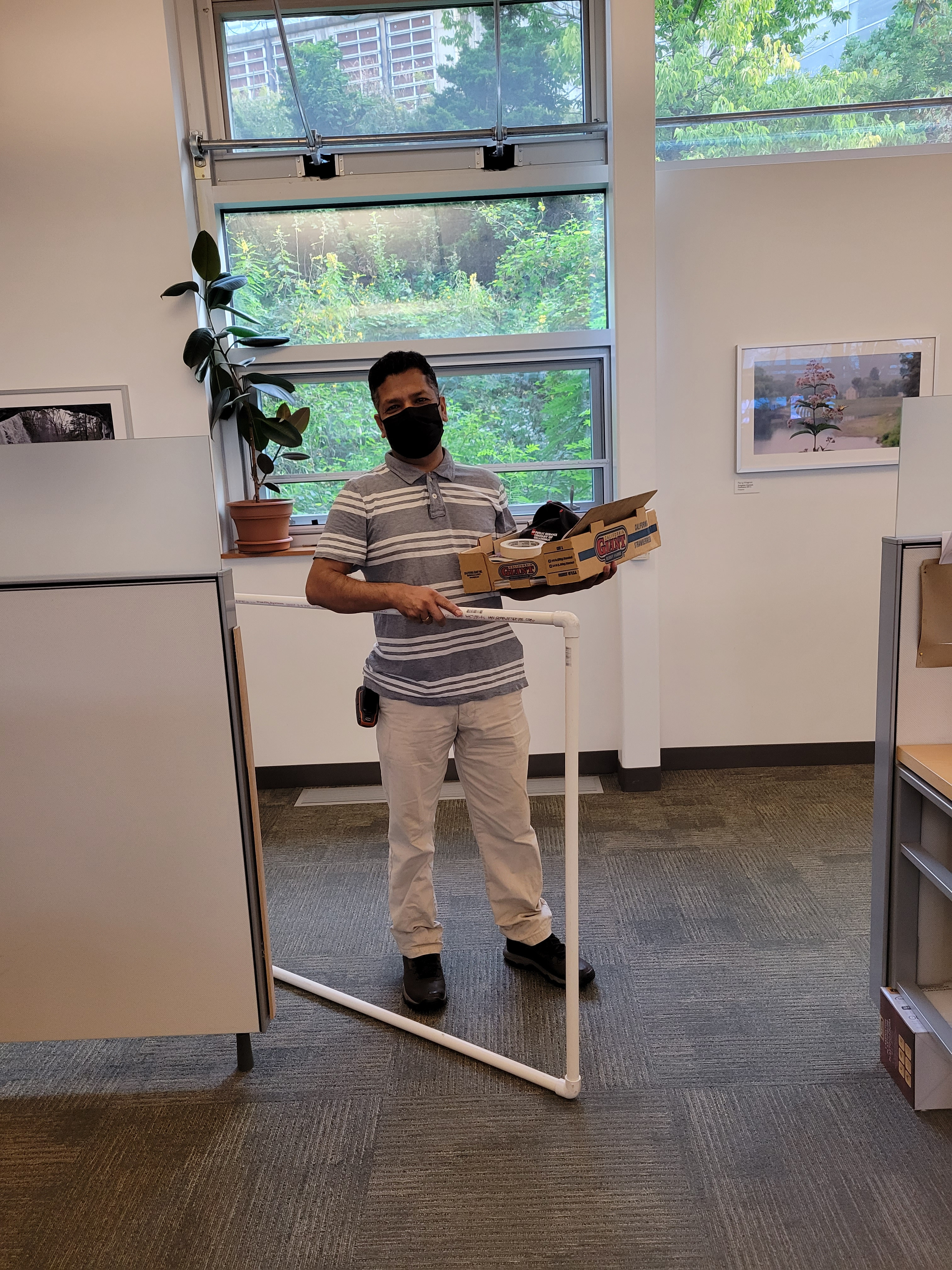
Shishir heading out to collect samples in 2021. Photo by Maria Wheeler-Dubas.
Core sample of soil.
Thinking back to this field work from the past two summers, Dr. Paudel says, “Working in urban meadows was a fantastic experience. Surrounded by native plants and beautiful flowers, I relished bees buzzing and butterflies roaming. The best moment was to demonstrate urban green spaces, plant communities, the sampling methods, and the significance of urban green spaces to the Pitts' engineering and urban ecology students.”
And what did researchers find from all of this work? You will have to join us next week to find out!
.jpg)
Dr. Shishir Paudel with Pitt students. Photo credit Sarah Kuebbing.
All photos by Dr. Shishir Paudel unless otherwise noted.
